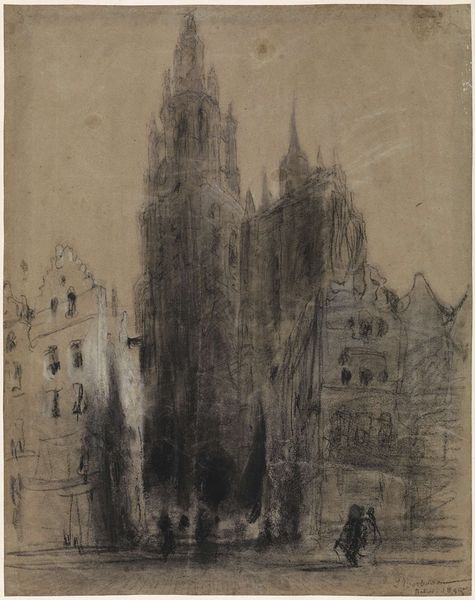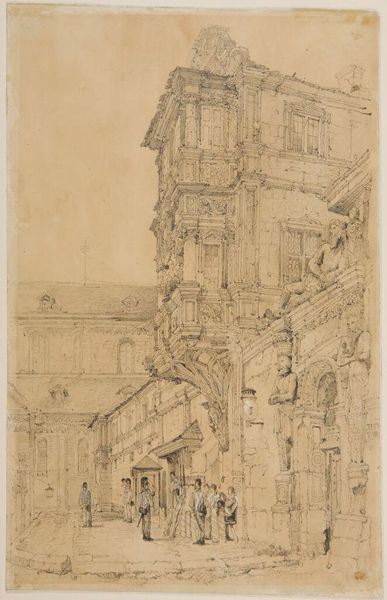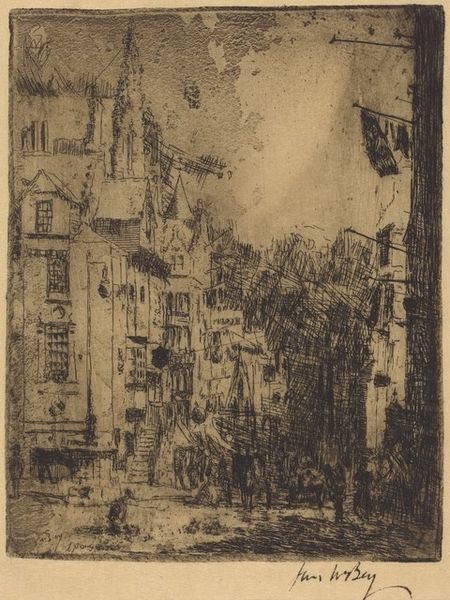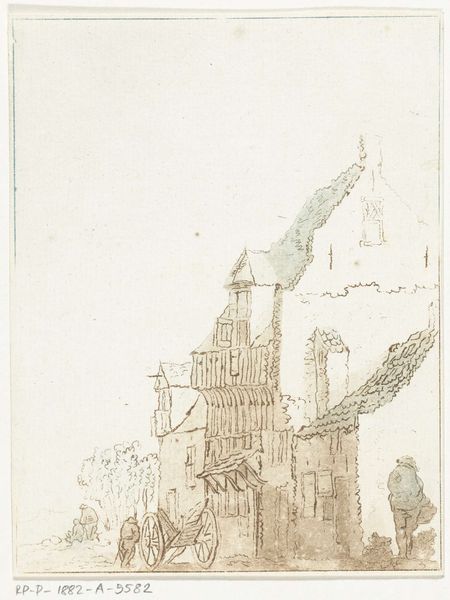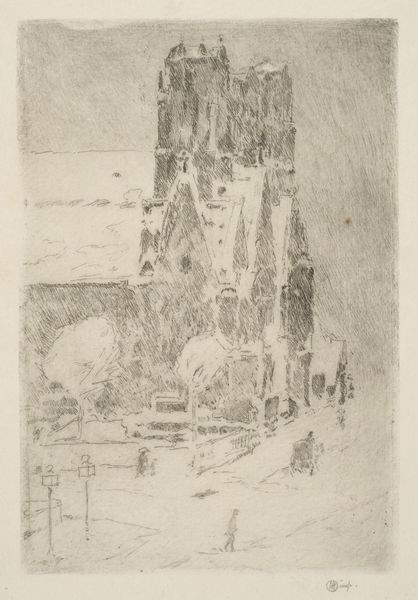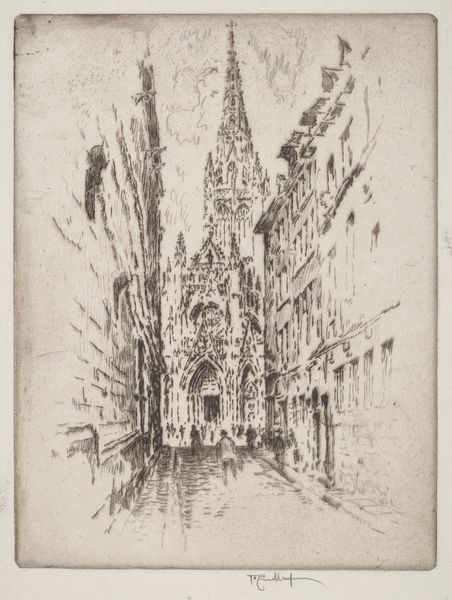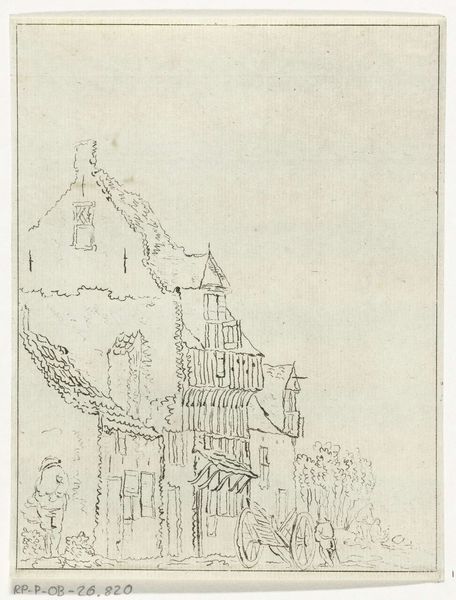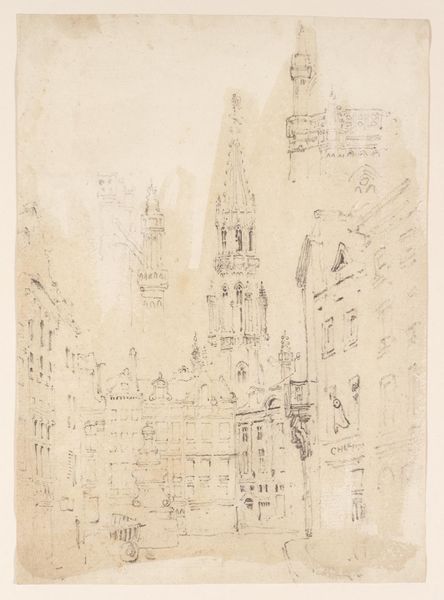
Dimensions: support: 323 x 234 mm
Copyright: CC-BY-NC-ND 4.0 DEED, Photo: Tate
Editor: This is Walter Sickert's "Dieppe, Study No. 2; Facade of St Jacques." It's a sketch, maybe charcoal on paper, and it feels transient, like a memory fading. What do you see in it? Curator: I see Sickert grappling with the legacy of empire through the lens of urban decay. The church, a symbol of enduring power, is rendered almost spectral, overshadowed by the quotidian life around it. Notice the faceless figures; how does their anonymity speak to the alienation of modern life and the dissolution of traditional social structures? Editor: That's a lot to unpack. So, the sketchiness is deliberate? Curator: Absolutely. It's a visual language of disruption. Sickert isn't simply depicting a scene; he's interrogating the power dynamics embedded within the urban landscape. The unrefined style mirrors the social unrest of the era. Editor: I'll definitely think about the work in this new light now. Thank you. Curator: The pleasure is all mine, it’s always helpful to contextualize art within historical and social power structures.

